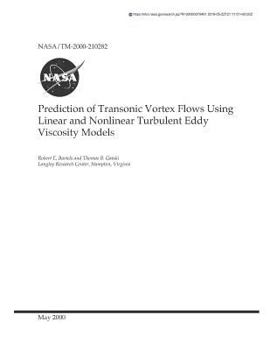Prediction of Transonic Vortex Flows Using Linear and Nonlinear Turbulent Eddy Viscosity Models
Three-dimensional transonic flow over a delta wing is investigated with a focus on the effect of transition and influence of turbulence stress anisotropies. The performance of linear eddy viscosity models and an explicit algebraic stress model is assessed at the start of vortex flow, and the results compared with experimental data. To assess the effect of transition location, computations that either fix transition or are fully turbulent are performed. To assess the effect of the turbulent stress anisotropy, comparisons are made between predictions from the algebraic stress model and the linear eddy viscosity models. Both transition location and turbulent stress anisotropy significantly affect the 3D flow field. The most significant effect is found to be the modeling of transition location. At a Mach number of 0.90, the computed solution changes character from steady to unsteady depending on transition onset. Accounting for the anisotropies in the turbulent stresses also considerably impacts the flow, most notably in the outboard region of flow separation.Bartels, Robert E. and Gatski, Thomas B.Langley Research CenterTRANSONIC FLOW; VORTICES; NONLINEARITY; EDDY VISCOSITY; THREE DIMENSIONAL FLOW; MATHEMATICAL MODELS; TURBULENCE EFFECTS; SEPARATED FLOW; POSITION (LOCATION); MACH NUMBER; FLOW DISTRIBUTION; DELTA WINGS; BOUNDARY LAYER SEPARATION; ANISOTROPY
Format:Paperback
Language:English
ISBN:1723748137
ISBN13:9781723748134
Release Date:January 1
Publisher:Independently Published
Length:36 Pages
Weight:0.24 lbs.
Dimensions:0.1" x 8.5" x 11.0"
Customer Reviews
customer rating | review
There are currently no reviews. Be the first to review this work.




















